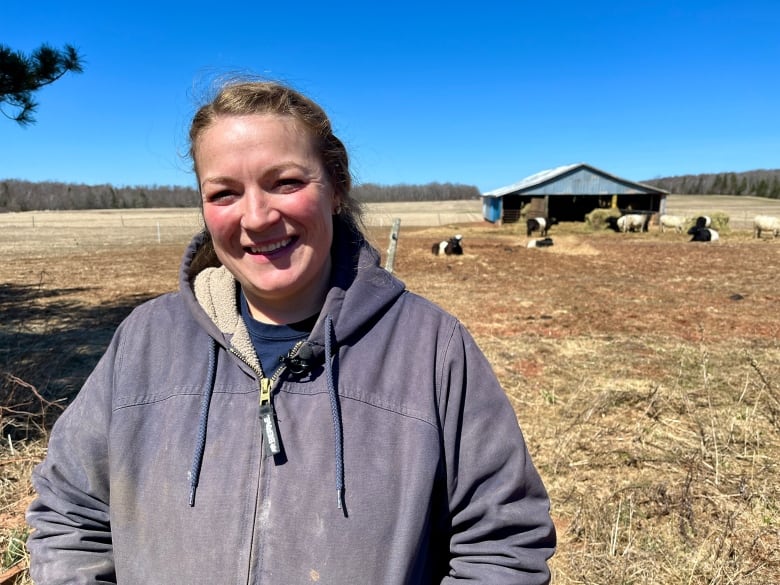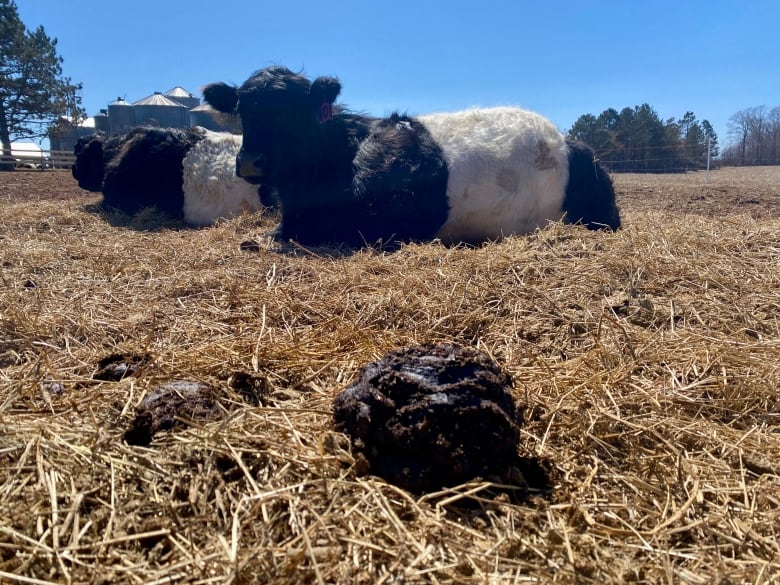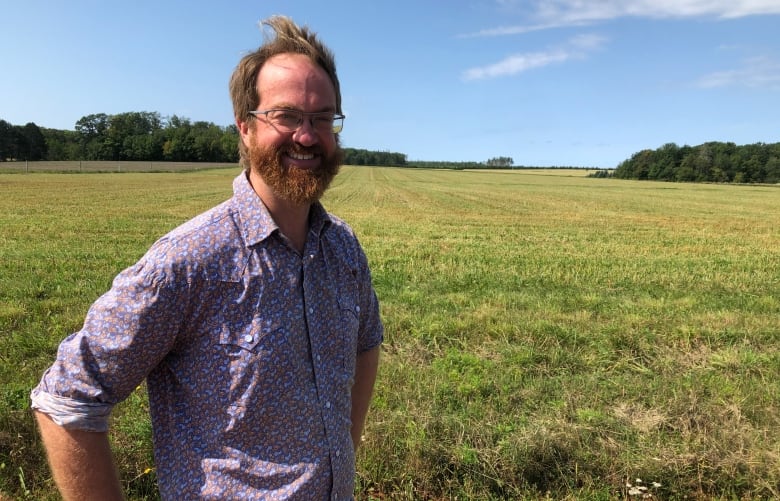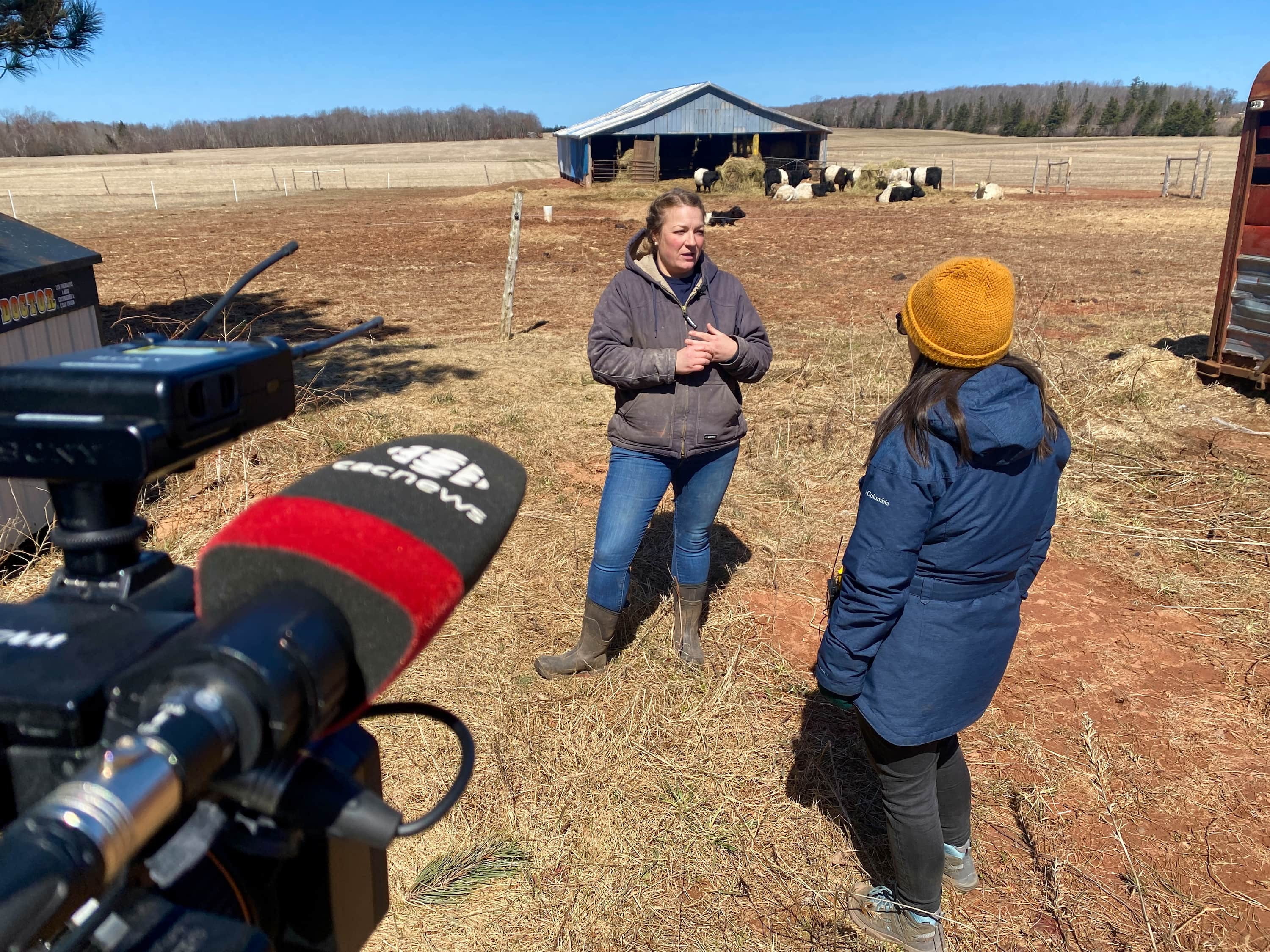
Sally Bernard’s black and white cows wander over a field in Freetown, P.E.I., chewing on hay and basking in the warm April sunshine.
These are beef cattle, but their main purpose isn’t to make it to market — it’s to improve the quality of the soil beneath their hoofs.
“They’re feeding the biology in the soil, which is then helping to sequester carbon,” explains Bernard, co-owner of Barnyard Organics.
“It’s just doing a whole slate of things that we don’t even really fully understand yet.”
Bernard is learning more about how to graze cattle on her organic grain farm through research as one of this year’s Nuffield Canada scholars.
As part of the agricultural scholarship program, she’ll travel to different parts of the world to visit farms that practice both grazing and crop growing — and bring that knowledge back to P.E.I. to help her farm and others on the Island.
“I just wanted to meet other people that are doing it elsewhere, get their ideas, network with them, share some of those challenges and successes,” Bernard said.
Sally Bernard, of Barnyard Organics in Freetown, P.E.I., is about to study how cattle might help improve farm yields if used as part of crop rotation — while also helping soil health and biodiversity — thanks to a Nuffield Canada Agriculture Scholarship. CBC’s Isabelle Gallant stopped by to learn more about her research.
Grazing and cropping in the same fields is not a popular practice on P.E.I., she says, or anywhere in the Maritimes.
“Either you crop in this field, or you pasture in this field,” Bernard explains. “It’s very rare that they go together.”
She says taking a combined farming approach comes with some challenges, such as avoiding soil compaction and needing to set up fences and water for cattle.
“Having a farm with one commodity is already a lot of management,” she said. “So incorporating those other things does complicate it.”
But Bernard, and her husband, believe the benefits outweigh the demands.

‘Pressures to reduce fertilizer use’
Beyond improving soil biology, their cattle herd boosts the fertility of their soil by providing free manure. And that saves money they’d otherwise spend on expensive fertilizer.
“This is a really timely topic given the pressures to reduce fertilizer use, and that the cost of all of those things are going up,” she said.
Although livestock contribute to climate change by producing methane, their manure can also reduce the need for chemical fertilizers, which also emit greenhouse gases.
Her own farm’s experiment is still in its early stages. Barnyard Organics is now on its fourth year of a planned eight-year grazing rotation.
Under their crop rotation plan, cattle stay in the same field for two years, and are moved twice a day so they can access to fresh grass and graze the field evenly.
Then last year, the cows moved to a new pasture — and Bernard and her husband planted wheat in the newly vacated field. The crop sown there, they said, shot up.
“We could already see the huge yield boost in the field where they had been,” Bernard recalls.

‘Foolish to ignore the potential’ to capture carbon
By improving the soil biology, the cows also sequester carbon on the farm, which helps mitigate climate change.
“I think it’s a bit foolish to ignore the potential that farmers have to sequester carbon,” said Bernard.
Though grazing and cropping on the same land is still rare on the Island, there is growing interest in the idea, says Adam MacLean, a manager of climate adaptation at the P.E.I. Department of Agriculture.
It’s still early days, adds MacLean, but he is seeing more beef producers partner with crop growers to graze cattle on cover-crop areas.
“The beef farmer gets the forage, and the potato producer gets the manure, the cover-crop management, and the soil health benefits,” he said.
Improving soil health is a major part of how farms can help mitigate climate change, MacLean says.
“If we have better soil health, more carbon sequestered, higher levels of organic matter — that soil will have a better ability to sustain a crop during periods of drought, for example,” he explains.
For P.E.I. farmers interested in adding livestock to their own farms, applications open Monday for a federal fund to help curb climate change — the On-Farm Climate Action Fund.
The P.E.I. Federation of Agriculture administers the fund locally, which can provide up to three-quarters of the cost of establishing fences and water systems for farmers who meet the criteria, says MacLean.

Making connections
For Bernard, one of the added benefits of grazing cattle on crop fields has been increasing her farm’s biodiversity.
“Insects are inevitable, so then the birds are inevitable,” she said. “I’ve seen three new bird species since we’ve added the cattle.”
Last month, she travelled to Brazil with fellow Nuffield scholarship recipients from 16 countries to begin her research process and make contacts.
“There’s a lot of people doing really interesting things all over the world and making those connections was invaluable,” she said of the trip.
Over the coming year, she plans to travel to the U.K. and New Zealand to visit farms that also practice grazing and cropping together.
“Farming’s pretty tough,” Bernard mused. “Being able to reach out to people that are wherever in the world — that are having some of those same struggles — can be really encouraging in times of need.”
